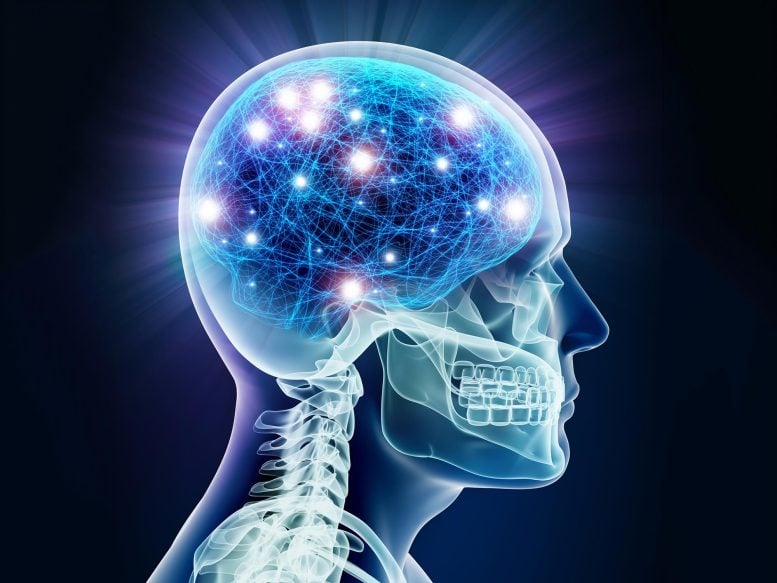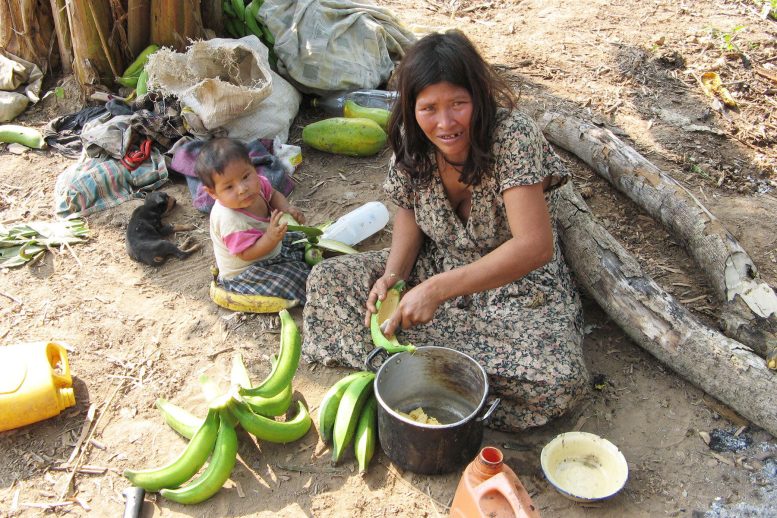
Indigenous communities in lowland Bolivia, such as the Tsimané and Mosetén, have some of the lowest rates of heart and brain disease due to optimal levels of food consumption and exercise. New research indicates that these communities’ lifestyles, which balance daily exertion and food abundance, contribute to healthy brain aging and reduced risk of disease.
Indigenous communities residing in the tropical forests of lowland Bolivia have reported some of the lowest rates of heart disease and brain disease in recorded scientific history. Now, research conducted by the University of Southern California (USC) on the Tsimané and Mosetén communities indicates that a balanced combination of food consumption and physical activity can maximize healthy brain aging and decrease the likelihood of disease.
The study was recently published in the journal Proceedings of the National Academy of Sciences.
The advent of industrialization has brought about numerous benefits, including increased availability of food, reduced physical toil, and improved healthcare access. However, our current way of life has also resulted in a lack of exercise and overconsumption of food, leading to the rise of obesity. Unfortunately, this sedentary lifestyle and obesity are linked to smaller brain volumes and quicker cognitive decline.
To better understand the tipping point where abundance and ease begin to undermine health, the researchers enrolled 1,165 Tsimané and Mosetén adults, aged 40-94 years, and provided transportation for participants from their remote villages to the closest hospital with CT scanning equipment.

The Tsimané have some of the lowest rates of heart and brain disease in the world. Credit: Tsimane Health and Life History Project Team
The team used CT scans to measure brain volume by age. They also measured participants’ body mass index, blood pressure, total cholesterol, and other markers of energy and overall health.
Researchers found that the Tsimané and Mosetén experience less brain atrophy and improved cardiovascular health compared to industrialized populations in the U.S. and Europe. Rates of age-related brain atrophy, or brain shrinking, are correlated with risks of degenerative diseases like dementia and Alzheimer’s.
“The lives of our pre-industrial ancestors were punctured by limited food availability,” said Andrei Irimia, an assistant professor of gerontology, biomedical engineering, quantitative/computational biology, and neuroscience at the USC Leonard Davis School of Gerontology and co-corresponding author of the study. “Humans historically spent a lot of time exercising out of necessity to find food, and their brain aging profiles reflected this lifestyle.”
The Mosetén: A bridge between pre- and post-industrialized societies
The findings also illustrated key differences between the two Indigenous societies. The Mosetén are a “sister” population to the Tsimané in that they share similar languages, ancestral history, and a subsistence lifestyle. However, the Mosetén have more exposure to modern technology, medicine, infrastructure, and education.
“The Mosetén serve as an important intermediary population that allows us to compare a wide spectrum of lifestyle and health care factors. This is more advantageous than a straight comparison between the Tsimané and the industrialized world,” Irimia said.
Irimia said that, along this continuum, the Mosetén showed better health than modern populations in Europe and North America — but not as good as that of the Tsimané.
Among the Tsimané, surprisingly, BMI and somewhat higher levels of “bad cholesterol” were associated with bigger brain volumes for age. This, however, may be due to individuals being more muscular, on average, than individuals in industrialized countries who have comparable BMIs.
Still, both the Tsimané and Mosetén come closer to the “sweet spot,” or balance between daily exertion and food abundance, that the authors think may be key to healthy brain aging.
The future of preventative medicine relies on an understanding of humans’ evolutionary past
The study’s authors explained that people living in societies with abundant food and little requirement for physical activity face a conflict between what they consciously know is best for their health and the cravings, or drives, that come from our evolutionary past.
“During our evolutionary past, more food and less calories spent in getting it resulted in improved health, well-being and ultimately higher reproductive success or Darwinian fitness,” notes Hillard Kaplan, a professor of health economics and anthropology at Chapman University who has studied the Tsimané for nearly two decades. “This evolutionary history selected for psychological and physiological traits that made us desirous of extra food and less physical work, and with industrialization, those traits lead us to overshoot the mark.”
According to Irimia, the best place to be in terms of brain health and risk for disease is the “sweet spot” where the brain is being provided with neither too little nor too much food and nutrients, and where you have a vigorous amount of exercise.
“This ideal set of conditions for disease prevention prompts us to consider whether our industrialized lifestyles increase our risk of disease,” he said.
Reference: “Brain volume, energy balance, and cardiovascular health in two nonindustrial South American populations” by Hillard Kaplan, Paul L. Hooper, Margaret Gatz, Wendy J. Mack, E. Meng Law, Helena C. Chui, M. Linda Sutherland, James D. Sutherland, Christopher J. Rowan, L. Samuel Wann, Adel H. Allam, Randall C. Thompson, David E. Michalik, Guido Lombardi, Michael I. Miyamoto, Daniel Eid Rodriguez, Juan Copajira Adrian, Raul Quispe Gutierrez, Bret A. Beheim, Daniel K. Cummings, Edmond Seabright, Sarah Alami, Angela R. Garcia, Kenneth Buetow, Gregory S. Thomas, Caleb E. Finch, Jonathan Stieglitz, Benjamin C. Trumble, Michael D. Gurven and Andrei Irimia, 20 March 2023, Proceedings of the National Academy of Sciences.
DOI: 10.1073/pnas.2205448120
The study was funded by the National Institute on Aging, the National Science Foundation, and the French National Research Agency – Investissements d’Avenir.








My wife and I eat gluten free steel cut oatmeal everyday with blueberries. I myself add crushed almonds and a banana
Light lunch
Nutritions supper with veggies and small amount of protein ( meats and chicken etc )
Haven’t drank soda in 15 years
No smoking
No Alcohol
No baked good
Very limited sugar overall
No junk food
Very limited fast food
Plenty of water
Fruit – mainly apples
Salads mainly in the summer with tomatoes
We take vitamin supplements
I’m a biker- I use the spin cycle in the winter
I stretch out every morning
I do planks for 60 seconds
Some push-ups and arm curl’s